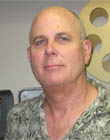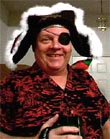 |
|
 Home Home
 Products Products
 Store Store
 Forum Forum
 Warehouse Warehouse
 Contact Us Contact Us

|
|
|
|
 
|
|
Author
|
Topic: Super Lume X Reflectors
|
|
|
|
|
|
|
|
|
Dave Macaulay
Film God

Posts: 2321
From: Toronto, Canada
Registered: Apr 2001
|
 posted 03-12-2010 08:23 AM
posted 03-12-2010 08:23 AM




Use whatever looks best to you, the silver one is probably a dichroic with few hours on it from a lower wattage lamp so that it hasn't turned yellow yet.
Rhodium reflectors are fairly rare, and some coated reflectors look quite silvery. Both are a stamped metal form or an electroplated nickel form with either a bare rhodium metal plating or a dichroic coating to absorb some infrared energy. Rhodium coated mirrors have a very uniform effect on the lamphouse's colour temperature, the dichroic coating is not very uniform that way and the colour shift varies widely. There's a LOT more infrared heat energy in the light beam from a rhodium plated reflector, so for even small power lamps you may need a heat filter at the least... which is another dichroic coated element with the same variability in colour shift.
Absolute colour temperature is only an issue for studio and lab screening rooms (and possibly a few oddball venues) but is routinely ignored in all platter based commercial cinemas. The few remaining changeover screens should have somewhat matched colour temperatures but nowadays I don't think many techs even look for colour changes on changeovers.
My point, should I have one here somewhere, is that I doubt you have a rhodium reflector. Strong (actually their supplier) measures colour temperature of the coating and codes the reflectors accordingly. Some have an actual number, most have a three letter code like BBD that converts to colour temperature. I don't have the code here but it doesn't matter for a single projector setup, preferably the codes should have the first two letters the same for a changeover setup. If you see such a code on your silver mirror then it is not a rhodium plated mirror. The part number is also different for rhodium ones, and that should be handwritten on the back of the bowl. I don't have this number and it isn't in the Strong price list - showing how unusual it is to find one?
The heat load on the trap and the film itself is much higher with a rhodium reflector. Even with 1500W you will get a very hot trap and may want a heat filter glass in the light path.
The colour temperature with rhodium isn't better than from a dichroic reflector, it is just more consistent. A studio or lab screening room needs (wants?) consistent colour temperature on screen, both projectors and over an extended time. Getting either matched reflectors or heat filters is a major PITA. Setting up the room with rhodium reflectors than matching the heat filters and lenses as well as possible then doing final colour temperature correcting with filters in front of the lenses means a lamp explosion just means a new rhodium reflector and minimal downtime. Using dichroic reflectors would mean an extended closure while a new matched pair of reflectors gets selected and the correcting filters redone.
| IP: Logged
|
|
|
|
|
|
|
|
All times are Central (GMT -6:00)
|
|
Powered by Infopop Corporation
UBB.classicTM
6.3.1.2
The Film-Tech Forums are designed for various members related to the cinema industry to express their opinions, viewpoints and testimonials on various products, services and events based upon speculation, personal knowledge and factual information through use, therefore all views represented here allow no liability upon the publishers of this web site and the owners of said views assume no liability for any ill will resulting from these postings. The posts made here are for educational as well as entertainment purposes and as such anyone viewing this portion of the website must accept these views as statements of the author of that opinion
and agrees to release the authors from any and all liability.
|
|
|
|

 Home
Home
 Products
Products
 Store
Store
 Forum
Forum
 Warehouse
Warehouse
 Contact Us
Contact Us




 Printer-friendly view of this topic
Printer-friendly view of this topic














